Journal of Tourism & Hospitality
Open Access
ISSN: 2167-0269
ISSN: 2167-0269
Research Article - (2022)Volume 11, Issue 4
In recent years, the concept of intangible cultural heritage has undergone multiple transformations due to the impact of globalization, effectively grappling with a new paradigm of increasing social complexity. In this new paradigm, the link between identity and place has become blurred, widening or narrowing the scope and nature of the factors falling within its area of influence. Music festivals with a historic dimension provide an emblematic example of immaterial cultural heritage, since they constitute experiential goods that exist only while they are being produced. They express artistic innovation while drawing on the historic cultural background of the context in question, its accumulated cultural capital. On this basis, this paper investigates the identity heritage component of the Festival Della Valle d’Itria in order to identify its possible role in the restoration of regional capital. Created in 1975 on the initiative of Paolo Grassi, whose Foundation is considered one of the best music schools in Italy, today, the Festival, held in the town of Martina Franca (Puglia, Italy), is an event with international appeal for lovers of opera and symphonic music. On the basis of an initial review of the scientific literature of the last ten years on the theme of “intangible cultural heritage” in the form of music and cultural festivals in general and the theme of “identity heritage”, the paper provides an initial typological definition of the Festival Della Valle d’Itria and identifies specific characteristics of the value it brings to the region in question from a geographical, cultural and tourism point of view. The objective is to understand the degree to which the Festival Della Valle d’Itria can be considered an “identity resource” capable of conferring a new image on the existing tourist destination.
Musical festival; Identity heritage; Intangible cultural heritage; Festival Della Valle d’Itria; Regional system
In recent years, the concept of intangible cultural heritage has evolved to encompass all the living traditions handed down over time by our ancestors: Oral expressions, music and performing arts, social practices, rituals, festivals and traditional crafts, as well as knowledge and practices relating to nature and the universe. Intangible cultural heritage has become, in essence, the capital of human civilization, having accumulated over thousands of years of history; its existence and rich diversity affect the entire community.
Among its priority objectives, UNESCO contributes to the implementation of measures to foster the transmission of intangible cultural heritage between generations. Thus, in 2003 it adopted the Convention for the Safeguarding of the Intangible Cultural Heritage, which establishes a set of procedures for the identification, documentation, preservation, protection, promotion and enhancement of intangible cultural heritage, effectively adopting a systemic approach [1]. Together with the distinctive configuration that intangible cultural heritage assumes within specific regional contexts, this approach has fostered the emergence of multidisciplinary studies and analyses by economists, geographers, sociologists, art experts, scholars of cultural goods and management scientists [2-6].
The interaction of this heritage with the local context plays a major role in these analyses. Most field studies of the use of intangible heritage are linked to tourist behavior and the resulting representations of heritage in the areas of interest. This gives rise to an “emerging identity” [7] in constant evolution, in which local communities and intangible heritage are increasingly interdependent as part of an inclusive process involving multiple opportunities for identification [8], association and representation. Intangible cultural heritage has thus become a functional interface between the local and the global, a possible tool for the construction of a multilevel identity.
One of the most representative examples of this process is the “Music Festival” as a product, which itself provides a characteristic example of intangible cultural heritage. In essence, it reflects a lived experience that ends the moment it is produced–unless there is a subsequent exploitation of the product’s output within the cultural sphere. The experience draws on the cultural capital that has accumulated in the regional context [9]. Music festivalsand cultural festivals in general-also display and reinterpret cultural heritage, contributing to the regeneration of components of collective identity and therefore of individual identity [10-17]. The tourist, who is also a spectator of the musical event, enjoys a personal, social and cultural experience consisting of extraordinary entertainment, outside their usual everyday activities. Festivals invest in quality experiences, and in so doing become a medium for the discovery and promotion of places, spaces and landscapes.
These factors combine to make music festivals a unique expression of intangible heritage. Moreover, in addition to their mainly intangible components, festivals have a number of tangible aspects that are related like most cultural consumer products-to the travel experience and associated travel products, as well as to the services associated with staying in the destination Ho.Re.Ca services. All these goods and services produce multidimensional value for their contexts [18-21] and can be assessed in terms of efficiency and performance. As an integral part of the regional offer of goods and services, the musical event thus becomes an element of regional distinction and attraction that increases the location’s visibility; raises its profile; creates, adapts and consolidates its image; increases social cohesion and a sense of belonging among the local community; activates internal/external exchanges; cultivates creative skills within and outside the community; and boosts economic and social development [22].
UNESCO has recognized this process, promoting the entry of such heritage into the market for the purposes of protection and the fulfillment of its potential, thereby creating a virtuous circle between cultural conservation and economic development [23,24]. As a resource that also has an economic value, intangible cultural heritage has great appeal in terms of tourism development, and tourism can in turn help to conserve local culture. The use of tourism to protect and develop intangible cultural heritage has thus become a universal practice.
It is this dual function of music festivals-an active element of intangible cultural heritage and a tool for creating value and identity-that forms the focus of this paper, which analyses the case study of the Festival Della Valle d’Itria-a major opera and concert event held annually in Puglia in southern Italy-as a changing cultural attraction capable of constant new representation and regional. The aim of this paper is to evaluate the Festival Della Valle d’Itria as a form of identity heritage capable of triggering economic and cultural transformations across the entire sub-region of the Murgia dei Trulli in order to consolidate a new approach to tourism.
Data collection
The study is based on primary and secondary data. The primary data were collected from interviews with selected “key players”, including representatives of the managing body of the Festival Della Valle d’Itria, the press and marketing office of the Festival and the “Valle d'Itria Local Action Group”, which has an important role in local economic development. The six semi-structured interviews covered the historical and cultural evolution of the festival; the evolution of fundraising methods and the role of sponsorship; stakeholders and links with the region: The evolution of the festival programme; and audience profiles. The information provided by the interviews was subsequently triangulated with official data sources and documentary evidence from the Festival’s governing body, such as budgets, minutes and directives.
Data analysis
This paper analyses the role of the Festival Della Valle d’Itria as an incubator of research into Italian Belcanto-considering its commitment to the rediscovery and performance of unpublished works-and as a potential tool for rethinking the regional tourism sector. The study analyses the Festival by identifying its key characteristics, descriptive variables and level of organizational complexity, with reference to the conceptual scheme proposed by [25]. This scheme is a part of a broader framework for interpreting the potential of festivals in terms of producing value for regions and the characterization and positioning of tourist destinations. In this paper, the authors focus on the typological characterization of the festival in order to establish, for the first time, a framework for the qualitative interpretation of the cultural product under investigation. This paper examines descriptive variables including Type of content; Duration; Frequency; Number of events; Location; Venue; Participation of the public; Trade; Institutional and organizational links; Number of stakeholders involved; Nature of stakeholders; Location and Institutional approach. These variables are used to identify the typological characteristics of the Festival Della Valle d’Itria and its role as a cultural tourism product. In order to enable a descriptive analysis of the Festival and to determine its level of complexity, the authors have enriched the analysis scheme. The study considers the whole of the Murgia dei Trulli area, which is investigated from the geographical, cultural and tourism points of view.
The Festival Della Valle d’Itria: The regional context
The Valle d’Itria is thought to get its name from a small church outside the city of Martina Franca to the south-east, dedicated to the Virgin Hodegetria, patron saint of Constantinople and guide and protector of travelers, a cult of Eastern origin of which there is significant traces in the area. The valley is a sub-circular karst depression between the towns of Martina Franca, Locorotondo and Cisternino, in the wider geographical region known as the Murgia dei Trulli, in the south-eastern corner of the Murgia hills in the heart of Puglia in southern Italy (Figure 1) [26,27].
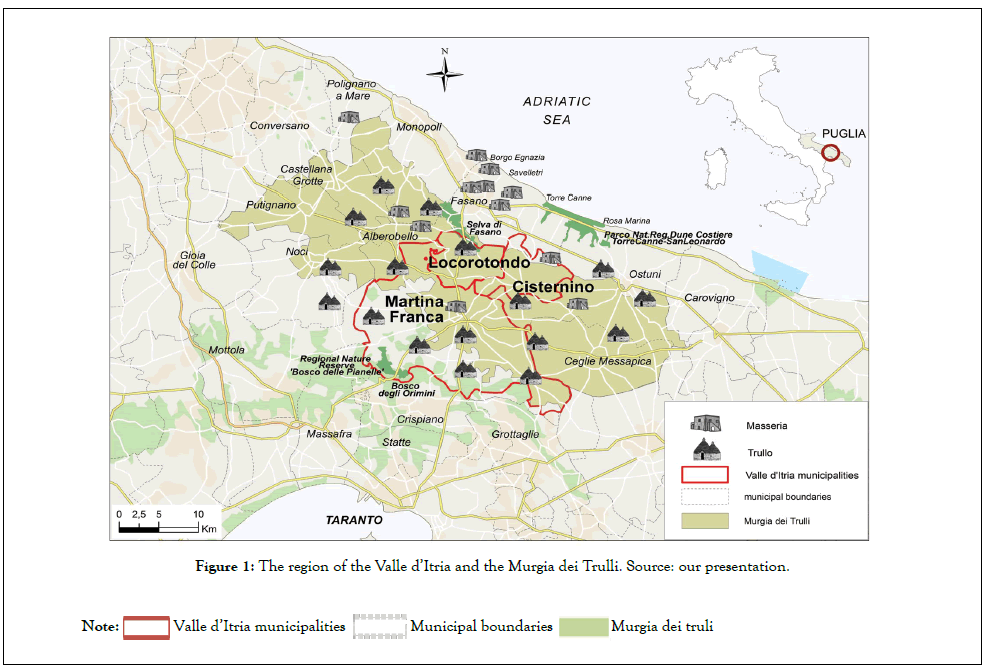
Figure 1: The region of the Valle d’Itria and the Murgia dei Trulli. Source: our presentation.

The terrain is gently undulating, reaching altitudes of 300-400 meters, with alternating depressions and hills, knolls and karst formations, dotted with white farmhouses and characteristic dry-stone buildings with conical roofs (‘trulli’) (Figure 2). Now famous throughout the world, the trulli find their most spectacular expression in the town of Alberobello, a UNESCO World Heritage Site since 1996.
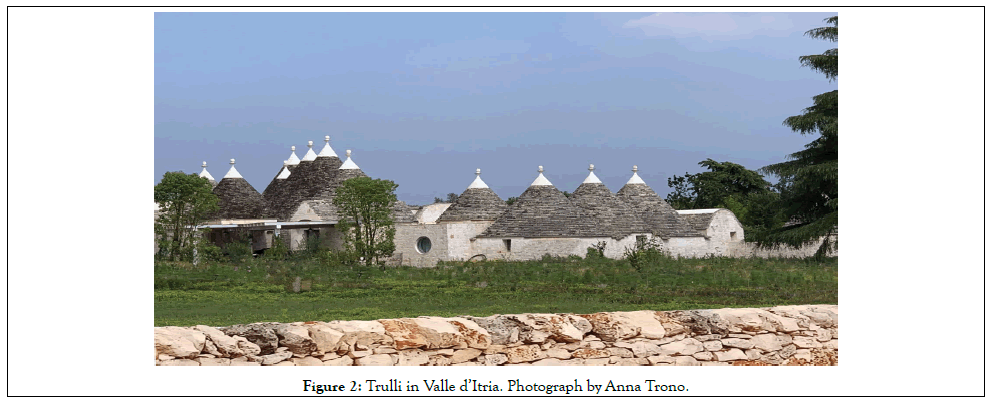
Figure 2: Trulli in Valle d’Itria. Photograph by Anna Trono.
It is a fairy-tale setting, a unique and enchanting panorama, with a succession of marvelous hues, a riot of colours ranging from the white of the trulli and the “masseria” farmhouses to the “red earth” of the countryside, the intense green of the small oak woods and centuries-old olive trees, and the softer green of the herbaceous and forage crops and pastures, grazed by livestock that contributes to the supply of quality dairy products and cured meats.
The Valle d’Itria and the Murgia dei Trulli hills offer a unique landscape, the result of the skillful integration of natural and physical components, added to which the forms of settlement and economic activities give it a distinct character and originality. Human activities here have adapted to the structure and shape of the land, making the best use of its opportunities and contributing to the construction of what Cesare Brandi calls ‘a countryside planned like a city’. The agricultural fabric is characterized by small fields, delimited by a dense network of dry-stone walls, also recognized by UNESCO as World Heritage, highlighting the intricate pattern of this rural landscape. The soil is not bare and rugged: On the contrary, the countryside bears the signs of industrious human effort, with vines, almonds, olives and fruit trees (especially cherries) [28]. Distinctive local wines such as ‘Bianco Martina’ and ‘Bianco Doc Locorotondo’ are produced here, and many indigenous vines (such as Fiano Minutolo, Bianco d’Alessano, Marchione, Verdeca and Maresco) are being re-evaluated. These vines have been revived by some operators, cultivated in single-variety vineyards and used to produce wines of the highest quality.
The area is rich in agri-food production that preserves its traditional characteristics, handed down by local farmers to the present day, with all its taste and authenticity, offering tourists a glimpse of the area’s history, traditions, rituals, folklore and cultural and religious events. The region contains the vast wooded areas of the Macchia di Orìmini and Bosco delle Pianelle, which are home to remarkable evergreen formations, the Selva di Fasano and, last but not least, the ‘Dune Costiere da Torre Canne a Torre San Leonardo’ (coastal dunes) Regional Natural Park, which aims to restore nature, protect biodiversity and responsible use of the dune system.
Near Savelletri, in Lama d’Antico, there is a whole rock-cut village, one of the largest and most interesting settlements of its kind in Puglia, consisting of caves connected by paths and steps carved into the rock (Figure 3). Believed to have been used from prehistoric times until the beginning of the modern era, the village consists of two environments: The first is centered on the churches of San Giovanni and San Lorenzo; in the second is the settlement itself, with stables, production areas and community spaces. Also of interest in the area is the Byzantine church of Seppannibale (Figure 4), belonging to the “masseria” (traditional farm) of the same name, dated to the late 8th century, and considered a model for a series of early medieval buildings with two domes aligned along the nave [29]. Then there is the frescoed crypt of S. Procopio and the recently restored rock church of Masseria Borgo San Marco.
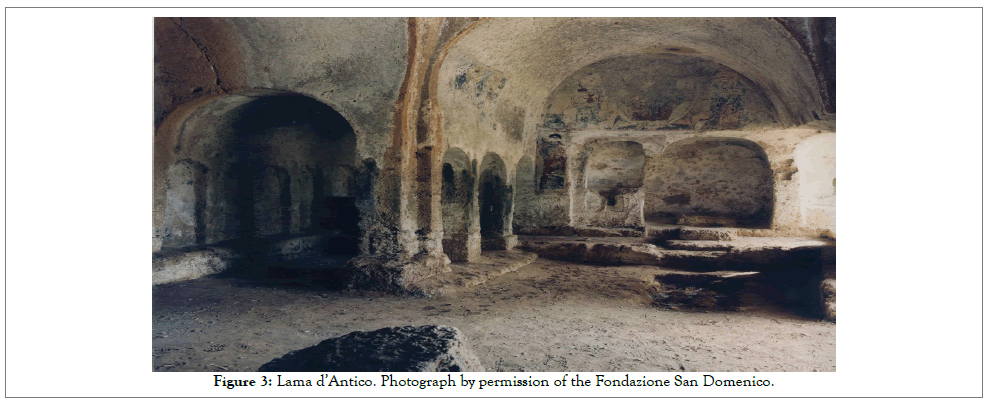
Figure 3: Lama d’Antico. Photograph by permission of the Fondazione San Domenico.
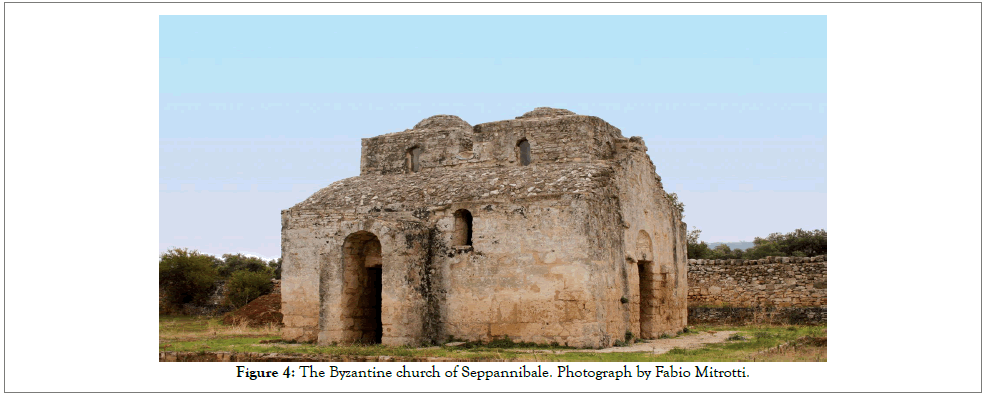
Figure 4: The Byzantine church of Seppannibale. Photograph by Fabio Mitrotti.
The Festival: origins and evolution
The Festival Della Valle d’Itria takes place in the town of Martina Franca, which, situated on the highest point of the Murgia dei Trulli hills, dominates the valley of the same name. Together with Taranto, the city is one of the most important artistic and cultural centers boasting seventeenth and eighteenth-century architecture in Puglia, and has many interesting Baroque and Rococo buildings that give it a characteristic eighteenth-century feel [30]. The old town of Martina Franca has a maze of narrow streets where the Baroque style dominates among the noble residences and even in the lesser dwellings, painted with whitewash (‘Inchiostra’) and built around small courtyards [31]. The Arch of St Stephen marks the entrance to Piazza XX Settembre, where the Palazzo Ducale Figure 5, which houses the town hall and the Church of Sant’Antonio, is located (Figure 5).
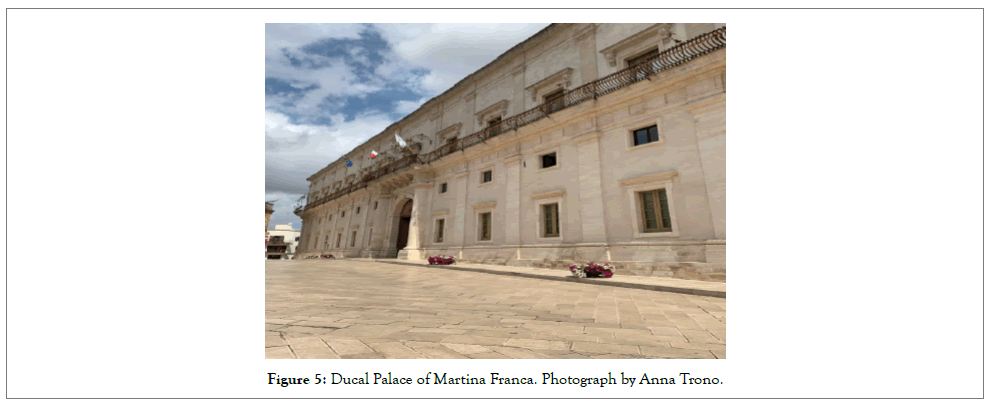
Figure 5: Ducal Palace of Martina Franca. Photograph by Anna Trono.
The prestigious Festival Della Valle d’Itria takes place in the atrium of the palace. It is an event of international importance, first held in 1975, thanks to the fortunate inspiration of the then mayor of Martina Franca, Francesco Punzi, and Paolo Grassi, then manager of La Scala in Milan. The aim of the Foundation was to support the development and dissemination of the city’s theatrical and musical culture by organizing the Festival Della Valle d’Itria, and to promote the region by leveraging the excellence of the performances and, above all, by training young people who would then go on to perform in various international theatres.
The Festival Della Valle d’Itria takes place every year from mid-July to the beginning of August, with new operas, concerts, evenings dedicated to the twentieth century, the best in art-house cinema and religious music. Since its inception, it has stimulated the revival of undervalued works and performance techniques. Over the years, it has accentuated its original focus on re-evaluating the Belcanto repertoire and the Neapolitan School of Music, in which composers from Puglia played a leading role, neglecting neither the great European repertoire nor elements of Italian Belcanto in works by foreign composers [32,33].
The repertoire explored ranges from the seventeenth century to the present day and includes 40 different composers, including all the leading figures from the Neapolitan school. In Martina Franca over the years, Baroque music has established itself thanks to the presence of historically authentic instrumental ensembles, guaranteeing performances consistent with the style of the period. Among the many productions, particular mention should be made of Nino Rota’s Napoli milionaria and Mercadante’s Francesca da Rimini, which saw its first performance in Martina Franca after 186 years. ‘Opera in masseria’ and ‘Il canto degli ulivi’ were particularly appreciated by an international audience. Confirming the prestige and value of the Festival’s proposals are a dozen coproductions with major Italian lyrical-symphonic foundations and three European festivals and theatres. Moreover, the Festival has proven able to engage with the present, eschewing a sterile and self-referential purely academic dimension, rediscovering titles and presenting them in various Italian and European theatres.
The Festival has created the Premio del Belcanto Rodolfo Celletti, dedicated to one of the Fathers of the Festival, its artistic director from 1980 to 1983, recognised as one of the greatest vocal experts of recent decades, linking the Festival to its historical roots. Most importantly it has established the Accademia del Belcanto ‘Rodolfo Celletti’, one of very few to have been recognized as a ‘school of national excellence in the field of higher musical education’ by the Italian Ministry of Culture. The Academy trains young opera singers in the various aspects of technique, style and interpretation of Italian Belcanto, shaping an entire generation of new talent in the international Belcanto scene. Particular attention is devoted to Baroque musical theatre, while seeking to broaden the horizons of the Festival to include twentieth-century and contemporary works, in the conviction that a research-oriented festival must also take an interest in contemporary creativity [34].
Typological characterisation of the festival
The Festival Della Valle d’Itria has a specific connection with its location thanks to the coincidence of various factors. It is a festival with a fixed time frame, staged every year over a few weeks, with a specific theme, i.e. opera and concerts. It includes both spectaclar and ritual elements. Spectacles are characteristic of modern societies. They are large-scale performances involving dialogic, polyphonic, and polythematic communication [35]. Cultural productions commonly described as spectacles include festivals (e.g. ethnic, regional, and national celebrations), public entertainment, civic and political ceremonies, and special religious events [36]. Rituals are defined as more or less invariant sequences of formal acts and utterances not encoded by the performers [37].
According to festivals contain elements of both ritual and spectacle [38,39]. The ritual elements are linked to rites of passage, and are geared to towards the transformation of society. The ritual dimension of the Festival Della Valle d'Itria is embodied in the temporary periodic "overturning" of the everyday social order via a sequence of formal acts of an artistic-cultural nature that are the result of a specific historical sedimentation. While festivals were originally largely produced and celebrated for local people, a further and much more recent aspect of their spectacular character is their attempt to attract audiences from “outside” the local communities, partly in order to the attention of the media international audiences.
The spectacular dimension of the Festival Della Valle d'’Itria can therefore be identified on the basis of its audience. International tourism accounts for a significant share of the Festival’s audience, in some cases exceeding 60%, with spectators coming from all over the world, thanks to extensive marketing and promotional activities. The Festival website, combined with Search Engine Optimisation and Google Adwords campaigns, help promotion of the Festival abroad, supported by attendance at national and international tourism fairs and media promotion. In 2019 – an emblematic year in this sense – the Festival hosted spectators from 19 different countries (Holland, France, Belgium, New Zealand,Germany, Spain, Switzerland, Austria, United Kingdom, USA, Argentina, Poland, Austria, Ireland, Japan, Sweden, Russia, Portugal and China). Around 20% of the audience was from the local area. It should be stressed that the percentages based on ticket sales data are partial, since, according to the organizers, it is not possible to track all sales from the various physical ticket offices (unlike the total availability of online sales data).
In order to provide an initial typological definition of the Festival Della Valle d’Itria, it was decided to use the scheme for the identification and classification of festivals in strategic managerial terms devised. This analyses the main characteristics, the key variables and the value components of the “Festival” product, in order to understand the mechanisms of value creation. The most important strategic and managerial variables are related to the system that organises, produces and supplies the product, i.e. the “institutional and organizational aspects”. These determine the level of complexity of the festival as a phenomenon: The more multifaceted the descriptive variables, the higher the level of complexity (Annexure 1).
In order to analyses the Festival we chose to extend the scheme by adding an intermediate level of complexity designated “Medium”. This includes all those variables which, due to the specific nature of the Festival Della Valle d’Itria, cannot be included in either the low or high category (Annexure 2).
Annexure 2 indicates that the type of content, frequency, trade component and participation of the audience all have a low level of complexity. The content of the festival varies, being either specialized or linked to a multitude of themes that determine the number of stakeholders involved, thus broadening its appeal. The more restricted the content, the more straightforward the range of actors involved. The frequency affects the planning and coordination of activities. In terms of management, the regularity of the event-the Festival Della Valle d’Itria takes place annuallyfosters “the institutionalization of organizational routines and relations between stakeholders” thus enabling the refinement of more or less consolidated management practices.
Within the Festival Della Valle d’Itria, the trade component is negligible and/or unplanned. It does not appear to be a marketoriented product, allowing for simplified operational management in this field. The participation of the public, despite the variety of events in the programme, is exclusively in “spectator” mode, with no meaningful involvement in planning and organisation. The Festival Della Valle d’Itria lasts about three weeks, meaning that the duration is a variable with a medium level of complexity, as is the ‘number of events’.
The level of complexity in terms of the ‘location’ and ‘venue’ of the events appears to be medium-high. Over the years, the presence of the Festival in the region has grown, with the addition of performances in sites of interest such as castles, cloisters and masserie in Martina Franca, Cisternino, Locorotondo, Ostuni, Polignano a Mare and Taranto. There has been a shift from a single, stable and well-established location to multiple sites. Nevertheless, it is not possible to say that the complexity of the “venue” is high because there is a “rotation” of the festival’s itinerant locations: The same locations may be reused in alternate years or for several consecutive years, only to change subsequently. Despite this, there is a strong interoperability between “indoor” and “outdoor” spaces. The Festival thus moves around the region, adopting a fresh configuration of the cultural product every time, partly perhaps with the aim of linking the image of the Festival with the vision of a geographical region that is also a cohesive community. The level of complexity of the locations and venues increases when it is not possible to develop economies of replication. However, in this specific case, we may recognize a stabilization of these variables resulting from the repetition, in alternate years, of locations and venues in which it is possible to exploit economies of experience.
Moving on to the analysis of the institutional and organizational aspects, it can be argued that the overall complexity of the Festival in this field is low, except for the number of stakeholders involved. Although it is true that the Festival has only one organizing entity, i.e. the Fondazione Paolo Grassi Onlus, it brings together various stakeholders of a public nature that determine its cognitive and cultural direction. This group of stakeholders represents and thus indirectly involves the local community, SMEs, etc. Indeed, in addition to Puglia Regional Administration, the Municipality of Martina Franca, the Province of Taranto and the Centro Artistico Musicale “Paolo Grassi” (the creator of both the Festival and the Foundation, established in 1994) also belong to the Foundation.
A second significant variable concerning management aspects is the nature of the stakeholders involved. The Fondazione Paolo Grassi Onlus is a non-profit organization based in Martina Franca (the main place of the Festival), and is thus associated with a location which is itself linked to the Festival. It therefore represents a “pure” supply system, consisting of the Foundation and its relationships, which is highly dependent on the local context and presents a lower degree of management difficulty than situations where the stakeholders are not based in the region where they operate.
The last aspect considered concerns the institutional solution adopted for the management of the Festival, which can be classified with reference to two variables: The number of institutional bodies directly involved in the management of the Festival and the institutional structure of these bodies.
In the case of the Festival Della Valle d’Itria, as already mentioned, the single organizing body includes some of the players involved in the event. “The aim of the Foundation is to ensure continuity, supporting and strengthening, by procuring adequate resources and financial tools, the event known as the ‘Festival Della Valle d’Itria’, organized by the Centro Artistico Musicale “Paolo Grassi”, without prejudice to the organizational autonomy of the same”. In this specific case, therefore, organizational negotiations are not resolved in separate time phases between multiple parties, but at a time established by statutory practice between parties constituting a single entity.
This analysis shows that the descriptive variables of the Festival have a low to medium level of complexity, while the institutional and organizational aspects generally have a low level of complexity. Higher institutional complexity is only observed in terms of “Number of stakeholders involved”, which reflects an unusual situation in which the foundation is a single organizing body composed of various stakeholders.
The value of the festival Della Valle d’Itria for the region
Like most artistic and cultural products, the Festival Della Valle d’Itria can have significant effects on the city of Martina Franca, the Valle d’Itria and, more generally, the entire Murgia dei Trulli area. These effects make themselves felt on various fronts, including the economic and socio-cultural situation, as well as the region’s image in terms of tourism. Financial support for the Festival Della Valle d’Itria is provided by the Municipality of Martina Franca, Puglia Regional Administration and the Ministry of Culture and Tourism, together with some private sponsors (Table 3).
| Public sector | 2017 | 2018 | 2019 | 2020 |
|---|---|---|---|---|
| Municipality of Martina Franca | 1,16,201 | 2,81,125 | 1,80,000 | 1,50,000 |
| Puglia regional administration | 5,30,000 | 6,50,000 | 6,00,000 | 4,00,000 |
| Fondo unico per lo spettacolo (FUS) MiBACT | 6,37,434 | 5,00,484 | 4,74,546 | 4,74,542 |
| Total public sector | 12,83,635 | 14,31,609 | 12,54,546 | 10,24,542 |
| Percentage public sector financial support | 100% | 100% | 93% | 94% |
| Private sector | ||||
| Art bonus | Not available | Not available | 19,500 | 4,500 |
| Individuals | Not available | Not available | 30,000 | 19,000 |
| Occasional sponsors | Not available | Not available | 40,000 | 40,000 |
| Total private sector | 0,00 | 0,00 | 89,500 | 63,500 |
| Percentage of financial support provided by the private sector | 0% | 0% | 7% | 6% |
| Total | 12,83,635 | 14,31,609 | 13,44,046 | 10,88,042 |
Table 3: Sources of funding for the Festival Valle d’Itria (contributions in euros and as %). Source: data provided by Francesco Punzi, Director of the Fondazione Paolo Grassi Onlus
Private-sector economic contributions, which have existed since 2019 with minimal fluctuations, remain fairly small compared to public-sector contributions. In addition to the contribution of the FUS, the contribution of the Municipality of Martina Franca was also important. Indeed, the Municipality has realized the extent to which seasonal tourist numbers are linked not only to the attractiveness of the location itself, but also to the goods and services offered by the Festival.
Among the funding bodies, an important role is played by Puglia Regional Administration through the Regional Strategic Plan for Tourism (called ‘Puglia 365’) and the Regional Strategic Plan for Culture (Piiil-Product, Identity, Innovation, Enterprise and Employment). These support the network of festivals run by six regional cultural foundations and associations and activities such as live performances that promote tourism based on the historical, architectural and landscape heritage of the region. In 2019 the Regional Administration signed an agreement for the co-production of operas with the Fondazione Paolo Grassi Onlus, supporting the development and dissemination of theatrical and musical culture in the region [40,41]. This supports the ‘Puglia’ brand by creating synergies between the region’s cultural strengths and live musical performances.
In 2020, in order to deal with the effects of the COVID-19 health emergency, which severely affected the entire regional Culture and Entertainment sector, the Department of Tourism, Cultural Economics and Regional Development was obliged to implement substantial financial measures to support businesses and workers in the sector. The programme entitled “Custodiamo la Cultura in Puglia” (Let’s safeguard Culture in Puglia; Regional Council resolution no. 682 of 12 May 2020), introduced a package of measures aimed at helping the culture sector get back on its feet. This included approximately 30 million euros for 2021, and an additional ad hoc funding of 4 million euros to support workers in the performing arts; 6.8 million euros in support of SMEs in the new ‘Pugliapromozione’ measure called ‘Custodiamo Cultura 2.0’; and another 10 million euros for theatre, dance, music and artistic activities throughout the region [42,43].
Partly thanks to these support measures, the Festival Della Valle d’Itria was reasonably successful even in 2020. Indeed, following the reopening of businesses, in order to cope with the worldwide economic and cultural crisis, the Festival organisation opted for a slight increase in ticket prices. As well as serving to position the Festival in the same medium-high price range as other prestigious international events, it was intended to ensure a more accurate perception of the quality on offer. Under the guidance of the Artistic Director Alberto Triola, assisted for some years by Fabio Luisi, a total of 181 performances were staged in the years 2015- 2020, with more than ten thousand tickets sold in 2017 and 2018, resulting in considerable takings (Table 4).
| Years | Number of tickets sold | Box office takings (in euros, excluding VAT) |
|---|---|---|
| 2017 | 10,610 | 1,12,915.00 |
| 2018 | 11,914 | 1,38,223.00 |
| 2019 | 9,722 | 1,15,527.00 |
| 2020 | 3699 (Capacity reduced due to COVID-19) | 77,101.00 |
Table 4: The statistical evolution of the Festival Della Valle D’Itria in the years 2017-2020. Source: Fondazione Paolo Grassi Onlus.
In terms of the production of socio-cultural value, the Festival has adopted a highly distinctive strategy based on the combination of original identity and innovation, building strong links with the younger generations. The fortuitous intuition of Paolo Grassi, shared by Rodolfo Celletti and Franco Punzi, former mayor of Martina Franca and long-time president of the Festival, who sought to create a ‘distributed’ and research-based form of theatre,was rewarded. Opting for a particular musical repertoire that is now rarely performed, the Festival was therefore oriented towards musicological choices and production methods that are often underestimated by the general public and critics. Not only did it meet the needs of an increasingly engaged and attentive public, but it also enabled the integration of a non-niche audience, including national and local users Indeed, the Festival’s performances are attended not only by an international audience but also by Italians (who accounted for 40% of ticket sales in 2019, according to the data recorded by the marketing department of the Fondazione Paolo Grassi), including locals.
Above all, the Festival is a fantastic laboratory, a place for discovering artistic talent among many young people from Martina Franca who have decided to study theatre, dance and music. The Fondazione Paolo Grassi Onlus supports and educates these young people by means of research projects, workshops, training courses, concerts and activities centred on theatre, literature, poetry and photography. It is precisely this link with the community that is the Festival’s key feature, a term of reference that has given rise to processes of sharing and the presence of private entities engaged in various ways in the promotion and entrepreneurial development of music as a cultural asset.
The Murgia dei Trulli now enjoys a reputation in both the scientific and tourism spheres, the latter representing a specific factor that can be used for destination management [44,45]. Thus, an informal relationship of reciprocal enhancement is established between the Festival and the local context, giving shape to a region that also produces culture through music. The region excels in terms of the high density of outstanding cultural and environmental resources, the high level of coordination, quality and integration of services aimed at users and the advanced development of related production chains [46].
The growth in arrivals and overnights in the Murgia dei Trulli and neighbouring municipalities in recent years (Figures 6 and 7) could be due to the unparalleled landscape heritage (for example the “trulli”), to improvements in the quantity and quality of accommodation facilities (from hotels to B&Bs and renovated farms that have become hotels or luxury residences) and to the many measures implemented by local authorities to improve the range of tourism services and cultural products on offer, which includes the Festival Della Valle d'Itria.
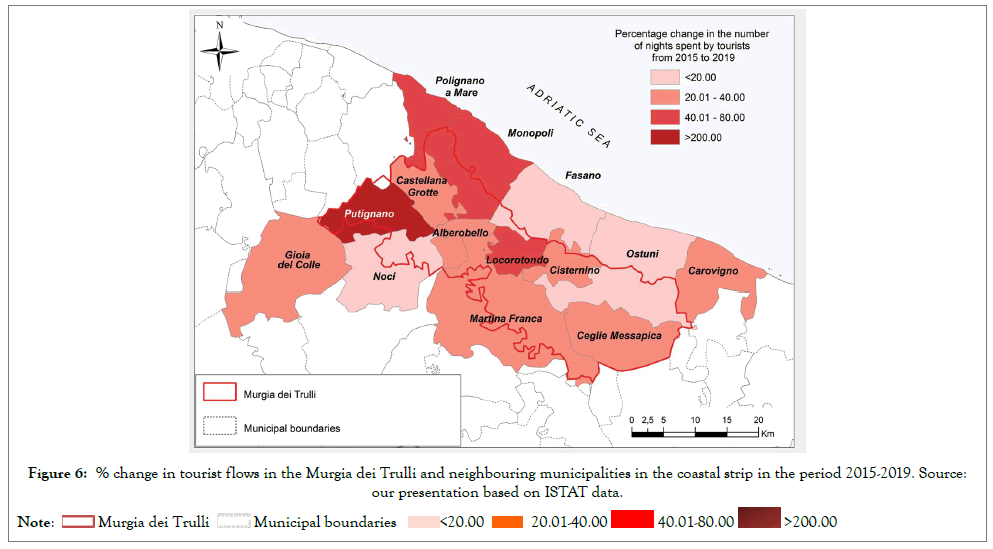
Figure 6:% change in tourist flows in the Murgia dei Trulli and neighbouring municipalities in the coastal strip in the period 2015-2019. Source: our presentation based on ISTAT data.

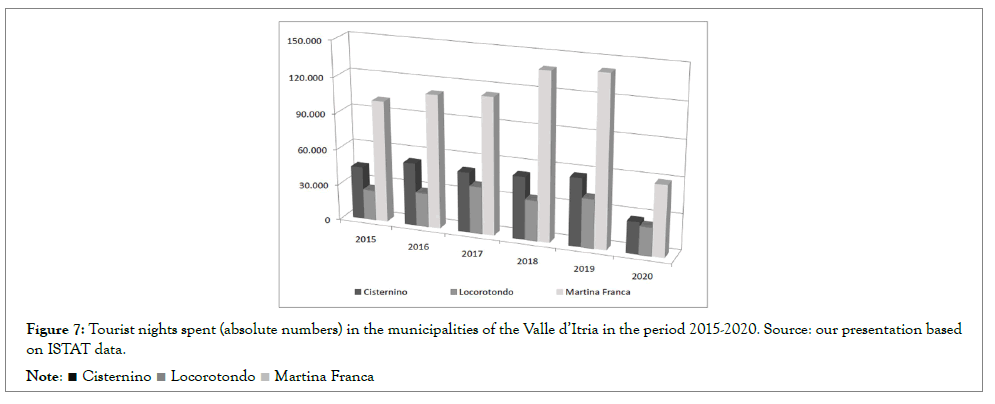
Figure 7:Tourist nights spent (absolute numbers) in the municipalities of the Valle d’Itria in the period 2015-2020. Source: our presentation based on ISTAT data.

In line with the global trend, these numbers varied considerably in 2020. In the period 2019-2020, tourist flows in the Murgia dei Trulli and neighboring municipalities in the coastal strip fell by 30-62%. The summer of 2021 saw a renewed focus on the Puglia region, named as the ‘Best Value Travel Destination in The World’ for the second time by National Geographic (seconded by Lonely Planet and the New York Times), in consideration of its rich culture and optimal management of natural resources.
The area surrounding the Valle d’Itria excels at offering quality tourism that is respectful of the environment and culture, ensuring the sustainable use of resources and accessibility. It is a tourism that focuses on cultural, artistic, historical and landscape attractions, making the most of local expertise and the quality of services to foster a culture of hospitality and develop skills tailored to the evolution of the market.
Since 2016, which marked Puglia’s entry to the top ten Italian regions by total number of presences, the Murgia dei Trulli, with the Valle d’Itria, has become a destination for quality tourism, attracting 20% of Puglia’s tourists in 2019. Interest is growing among foreign tourists in particular, as shown by the constantly increasing arrivals and presences. The most popular destinations for foreigners are Polignano, Alberobello, Martina Franca, Fasano, Monopoli and Ostuni (Figure 8).
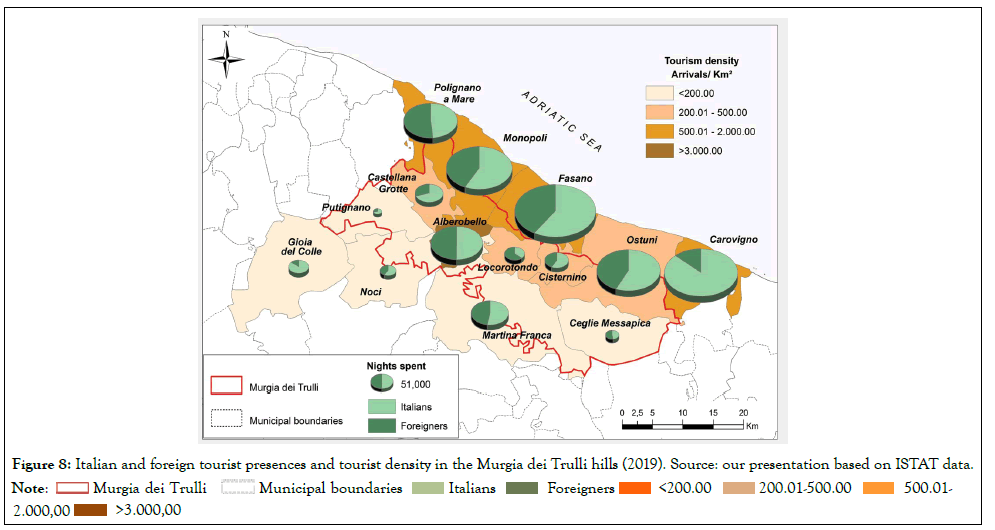
Figure 8: Italian and foreign tourist presences and tourist density in the Murgia dei Trulli hills (2019). Source: our presentation based on ISTAT data.

The sandy beaches, which attract large numbers of tourists, are concentrated mainly in Monopoli and Polignano and the nearby seaside resorts of Savelletri and Torre Canne (Municipality of Fasano), leaving large stretches of coastline free. Fasano is the centre of tourism in Puglia, with the greatest presence of luxury accommodation facilities offering all the services required by an exacting clientèle. It is a type of tourism in which quality plays a leading role, especially in terms of accommodation, which is of a medium-high level (Figure 9).
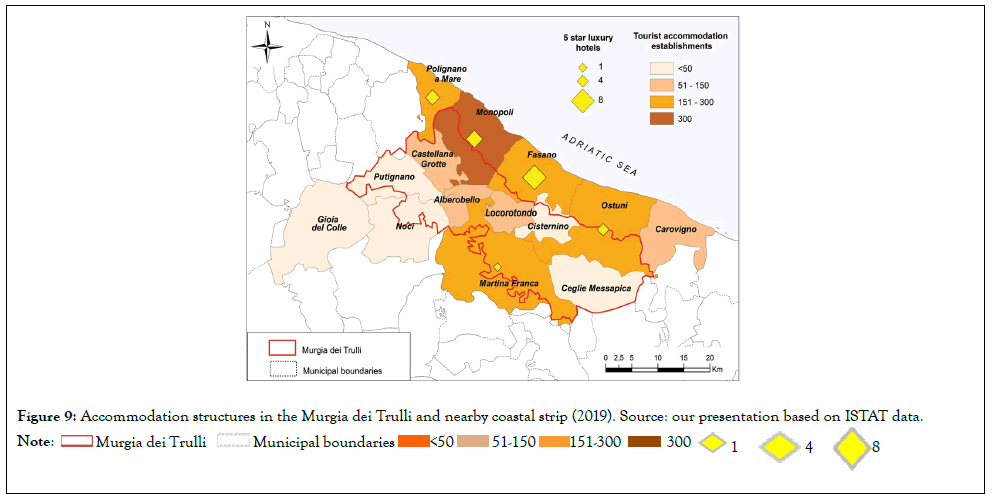
Figure 9: Accommodation structures in the Murgia dei Trulli and nearby coastal strip (2019). Source: our presentation based on ISTAT data.

This is also the result of shrewd planning and tourism promotion policies-implemented by local administrations and stakeholders such as the Valle d’Itria LAG, the Coastal Dunes Regional Park and the Murgia dei Trulli authority – which have succeeded in distributing tourist flows over ten months of the year and aim to boost tourism even in those few periods of the year that are still weak.
The analysis of the Festival of the Valle d’Itria identified it as a contextual phenomenon operating in the cultural and artistic sector of a specific region. Associated with a primary, single act of creation, the originality of the Festival (which has new acts each season) arises from the cultural dimension of the community, which is continuously hybridized by external factors. By participating in the creative act represented by the festival it is possible to create forms of cultural syncretism that facilitate exchanges and enhance the value of various resources. When users attend the Festival, the local–global interaction becomes explicit and institutionalized and is reiterated. Via the collective action of the subjects involved, it becomes a process performed on the basis of awareness: The ‘global’ element present in the Festival Della Valle d’Itria is not generic but specifically filtered via its thematic (cultural) component and the way in which it is managed. The degree of globalization (resulting from the integration of the local component with the global, i.e. collective experience) is an indicator of the social value and knowledge produced by the territory concerned. As a place where global and local come together, the Festival Della Valle d’Itria can be understood as the ‘juxtaposition’ in a physical location of (i) the tangible space of the territory in which the community operates; and (ii) the intangible space of interrelations and exchange, which is mediated by the users. The region seems to be making use of the interplay between tangible and intangible heritage–as part of which, the specific contribution of the festival is to support the creative industries, improve the region’s image and attract talent–all in a balance of tangible and intangible resources.
The Festival Della Valle d’Itria, which for 47 years in Puglia has been replicating and reformulating a lyrical-symphonic tradition recognized worldwide, displays, in typological and managerial terms, an average level of organizational complexity. This state of affairs is the result of the evolution of the system of goods and services on offer, which, while maintaining a simple managerial structure, has undergone strategic transformation over the years, as demonstrated by the broader regional coverage of the offer and the diversification of the product, which nonetheless respects its main theme. Moreover, the Festival Della Valle d’Itria is able to “accomplish the threefold goal of attracting intense expenditure, forging a new urban image and acting as a driving force behind cultural creativity and social cohesion” as shown by the analysis of specific characteristics of its production of value. The main objective of the research was to identify and evaluate the specific parameters of the Festival Della Valle d’Itria as a driver of cognitive and cultural development in the region. The operational implications of the research are intended to be of interest to both the Festival’s managing body and regional policy makers. For the former, the analysis may help to place their product within the identified type and, therefore to provide a potential basis for the evolution of the festival in managerial and strategic terms. For policy makers, this paper may represent a tool with which to assess the role of the festival in the development of the region’s cognitive potential and thus to explore new forms of cultural tourism.
The research has some limitations. Firstly, the study did not seek to investigate the behavior and motivations of the Festival’s consumers, but rather considered the festival purely from the supply side. A subsequent phase of the research might rectify this. The second issue concerns the analysis of the Festival’s managerial and organizational evolution. A further in-depth study should focus on the specific objectives of this evolution and on the results it has achieved in geographical, economic, cultural and tourism terms. Thirdly the study could not identify any cause-and-effect relationship between the Festival and the regional tourism context. The Festival was investigated as part of a broader range of culturaltourist goods and services, as specific data on event tourism are lacking. To date, therefore, the Festival’s capacity to improve the image of the area, attract tourist flows, utilize regional resources and stimulate social and economic regeneration, remains unclear. Future studies should examine the relationship between the effects of the Festival and the general effects of tourism, in order to identify positive and/or negative impacts. Generally speaking, the key aspects of future research include the study of the role that the Festival Della Valle d’Itria could play in the years to come within a new systemic representation of the regional goods and services on offer, as a cultural identity product facilitating cross-fertilization of regional cultural expertise and resources.
I would like to thank: Mr Franco Punzi, President of the Fondazione Paolo Grassi o.n.l.u.s., Ms Floriana Tessitore, Senior Press Officer at Festival della Valle d’Itria di Martina Franca at the Fondazione Paolo Grassi o.n.l.u.s.; the marketing staff of the Fondazione Paolo Grassi o.n.l.u.s.; Ms Ornella Galasso, head of animation and cooperation at Valle d’Itria Local Action Group (LEADER programme).
Supplementary File
Supplementary file associated with this article. Click to download.
Table.docx
Citation: Castronuovo V, Trono A (2022) Musical Festivals and Cultural Tourism the Festival Della Valle dâ??Itria as â??Identity Heritageâ? for the Renewal of Heritage Tourism. J Tourism Hospit.11:504.
Received: 06-Aug-2022, Manuscript No. JTH-22-18722; Editor assigned: 10-Aug-2022, Pre QC No. JTH-22-18722(PQ); Reviewed: 24-Aug-2022, QC No. JTH-22-18722; Revised: 31-Aug-2022, Manuscript No. JTH-22-18722(R); Published: 07-Sep-2022 , DOI: 10.35248/2167-0269.22.11.504
Copyright: © 2022 Castronuovo V, et al. This is an open-access article distributed under the terms of the Creative Commons Attribution License, which permits unrestricted use, distribution, and reproduction in any medium, provided the original author and source are credited.